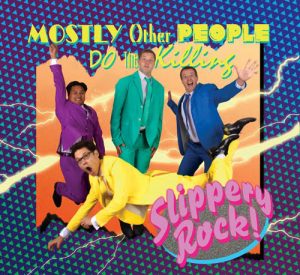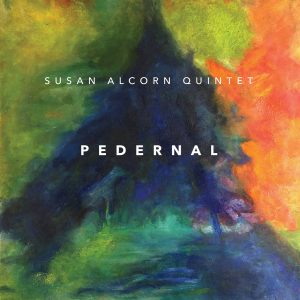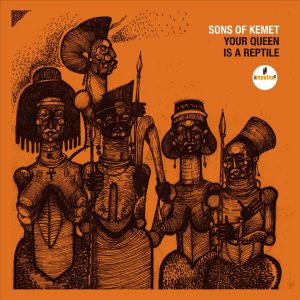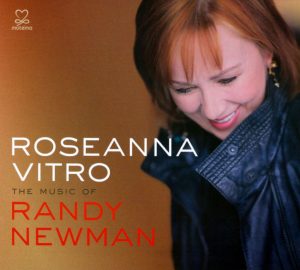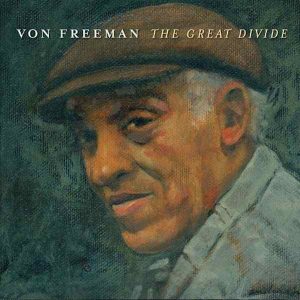
Paul van Kemenade
Released December 15, 2010
DownBeat Five-Star Review
YouTube: https://music.youtube.com/watch?v=fj3LwRMQhCs&list=OLAK5uy_lWzpuwmKaFtidXnvS9Q-nrkf8L–gp4OM
Spotify: https://open.spotify.com/album/5JUYI8dvK04CO3mQdwaXlm?si=nkbIWwKIS1Cxpd2tEdU9kg
About:
Alto saxophonist Paul van Kemenade is one of the most important exponents of the Tilburg school. He is admired for his powerful, lyrical play, which critic Michiel de Ruyter evokes comparisons with Piet Noordijk. He is also praised for his commitment to organizing concerts and facilities for musicians. Van Kemenade grows up in Valkenswaard and starts at the age of thirteen with tenor saxophone, as a member of the harmony. In the second year of the Brabant Conservatory in Tilburg, he switches to alto sax and is introduced to senior students Niko Langenhuijsen, the most active band leader of the Tilburg school. Van Kemenade is not ready to graduate; he plays in a theater act, in the night circuit and in various jazz bands, including the Municipal Cleaning Orchestra Vaalbleek conducted by Langenhuijsen. In 1982 he founded his own quintet. Two years later he wins the Podium prize. With two other winners of this prize for young talent, trombonist Wolter Wierbos and guitarist Jan Kuiper, he forms the successful Podium Trio. In 1993 Van Kemenade starts in Tilburg with Stranger Than Paranoia, a festival for improvised music in the broadest sense of the word. In 1994, his quintet made a long tour through South Africa, where intensive collaboration was developed with local musicians. In 1999 Paul van Kemenade receives the Boy Edgar Prize. African music has an increasing influence on his playing and composition style. The quintet is going up
This CD contains nine pieces that the alto saxophonist recorded in different settings. He once played the Tilburger with, among other things, a harmony orchestra and in African, Spanish, pop and computer instrumentations, now he sought collaboration with Cappella Pratensis, a vocal ensemble that keeps Renaissance music alive. Three singers from the Cappella weave their ethereal sounds in the opening piece “Fantasy Colors” on the text “Lauda Jerusalem” from biblical psalm 147 through the patchwork covering the whole.
It is surprising to note how the music in which a time difference of five centuries occurs, mixes as logically as what. The same applies to the input of a flamenco guitar. Classical music has been experimented with more often in styles in which it does not normally belong. The result was usually that due to the syrupiness both directions drowned in each other. This is not the case here: Cappella Pratensis lifts the overall sound to a new horizon.
The album was created under great pressure. In the middle of the recording period he became seriously ill. During the recovery period the alto saxophonist / composer once again dived into the studio and the performance circuit. With a striking and impressive result: Paul van Kemenade seems, no: has descended more into himself. His playing on the alto saxophone is more subdued; the power he develops on it and which has become his trademark over time is now used differently, more ingeniously with an even deeper expressiveness. It is precisely with the concept where Paul van Kemenade has now arrived that his music gives unfathomable depths.
Track Listing:
1. Fantasy Colours (Paul Van Kemenade) 9:09
2. Close Enough (Paul Van Kemenade) 8:58
3. Lapstop (Paul Van Kemenade) 5:44
4. Take It Easy (Paul Van Kemenade) 4:25
5. Cool Man, Coleman, Pt. 1 & 2 (Paul Van Kemenade) 5:25
6. Cuckoo (Ernst Reijseger) 4:14
7. It is Never Too Late (Paul Van Kemenade) 3:34
8. Gathering For Alto and Cello (Ernst Reijseger) 6:16
9. Vormarz (Eckard Koltermann) 4:15
Personnel:
Paul Van Kemenade: alto saxophone (1, 2, 3, 5, 6, 8)
Ernst Reijseger: cello
Han Bennink: snare drum
Cappella Pratensis (Stratton Bull; Lior Leibovici; Pieter Stas): vocals
Frank Möbus: guitar
El Periquin: flamenco guitar
Ernst Glerum: double bass
Serigne Gueye: percussion
Angelo Verploegen: trumpet, flugelhorn
Louk Boudesteijn: trombone
Wiro Mahieu: double bass
Rein Godefroy: piano
Ray Anderson: trombone
Eckard Koltermann: bass clarinet
Stevko Busch: piano
Achim Krämer: drums
Benjamin Trawinski: double bass
Recorded December 17, 2009, at Bimhuis, Amsterdam
Review:
Ever heard a jazz CD open with Gregorian chant? A composition involving a Renaissance vocal ensemble, flamenco guitar, Senegalese percussion and jazz quartet also has to be a first. Further listening reveals rich variety and surprising homogeneity, driven with deep conviction from the leader, already confirming this as one of my albums of the year.
Dutch saxophonist Paul van Kemenade’s expressive alto and bluesy feel betray a likely debt to David Sanborn and Maceo Parker, but might also have been distilled from Bunky Green, Johnny Hodges or Amsterdam-based saxophonist Michael Moore. Clawing for precedents ends there, since this is a unique record. Contexts are ingenious, from three horns plus bass, to duo with cello, to big-shot quintet with Ray Anderson, Ernst Glerum and Han Bennink. The latter plays snare with brushes, contributing to an overall chamber-like vibe. Collaborations with Angelo Verploegen and Louk Boudesteijn suggest a regular band given the perfect tonal overlay, bassist Wiro Mahieu as a fine counterweight. The leader’s “Close Enough” and “It Is Never Too Late” whiff of rhapsodic ballads and detour into peculiar polyphonic places, the former fragmenting into spacious abstraction. His alto darts and dives luxuriously, a rainbow feathered bird of paradise riding to the stratosphere. Speaking of birds, “Cuckoo,” with Ernst Reijseger plucking and strumming cello and guffawing like a tipsy woodchopper, is brilliant and hilarious. Despite the alto’s distinct pump in the mix, there is great sensitivity to dynamics and a lovely hover betwixt classical, composition and improv.
Michael Jackson (DownBeat)

